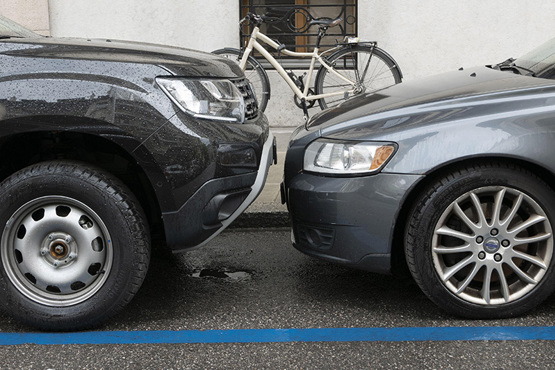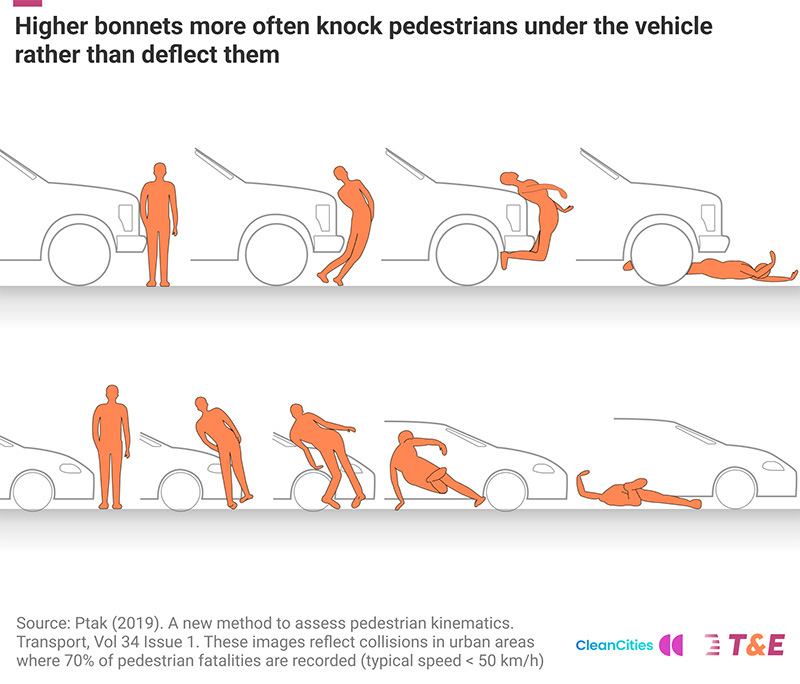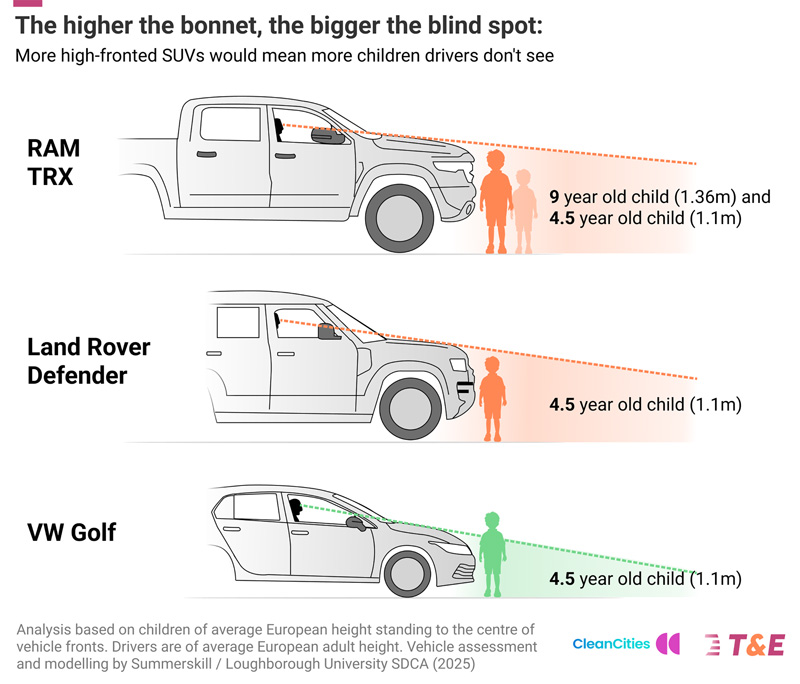Larger cars put all road users at risk, warns new report

The bonnet height of new cars in Europe is increasing year on year, driven by the growth in SUV sales, putting all road users at risk, warns new research from T&E, supported by the FIA Foundation.
The report ‘Ever-higher: the dangerous rise of bonnet height, and the case to cap it’ identifies that the average new car bonnet height is increasing by half a centimetre a year, reaching 83.8 cm in 2024, up from 76.9 cm in 2010, across the EU, the UK and Norway. The trend is part of the recent phenomenon of ‘carspreading’, where supersized SUVs crowd out space in towns and cities and are more dangerous in a crash.
In crashes, high-fronted cars typically strike adult pedestrians above the centre of gravity, often first hitting vital organs. The higher the vehicle front the more likely a person will be knocked under the car, rather than pushed to the side. One study, based on crashes involving 300,000 road users in Belgium, suggests that a 10 cm increase in bonnet height (from 80 cm to 90 cm) raises the risk of death by 27% for pedestrians, cyclists and other vulnerable road users.

High bonnets also reduce drivers’ vision of other road users. Tests commissioned by T&E find that a driver of the highest fronted model on EU and UK roads, the Ram TRX, is unable to see children aged up to nine standing directly in front. A Land Rover Defender driver cannot see children aged up to four and a half.

The rise in bonnet height coincides with the steady increase in SUV sales from 12% of the European market in 2010 to 56% last year. European and national laws do not currently limit bonnet height.
The report recommends that:
- The European Commission should reverse the bonnet height rise by July 2027, the deadline to review EU vehicle safety legislation, and suggests the same for the UK;
- Bonnet height should be included on the new Vehicle Registration 2030 along with the width, length and total vehicle height of new cars sooner under separate legislation (e.g. type approval)
- A Child Visibility Test should be adopted to reduce vehicle blind spots, first for inclusion in Euro NCAP’s protocols before being brought into EU vehicle safety law.
- Countries and cities should make taxes and parking charges fairer by linking them to the weight and size of vehicles.
- Across most of Europe, weight is the best available proxy until lawmakers make size data more widely accessible.
The report concluded that the rise in high-fronted SUVs poses a clear and growing threat to public safety, especially for children. With no benefit to society and mounting evidence of harm, it identified that it is time for lawmakers at all levels to act with a simple, effective bonnet height cap.
James Nix, vehicles policy manager at T&E, said: “Higher bonnets are a danger to pedestrians, cyclists and people in regular cars. It’s impossible to see children standing in front of some of the highest fronts. The growing trend towards SUVs means this problem will only get worse unless we set limits.”
Sheila Watson, FIA Foundation Deputy Director, said: “Growing SUV heights represent a clear and immediate danger to every street user. Pointless size increases not only pose safety threats, but also use more resources, create more emissions, and are more expensive to buy and run. The European Commission and UK government can and must legislate against oversize vehicles dominating our streets.”
Read the report 'Ever-higher: the rise of bonnet height, and the case to cap it'



